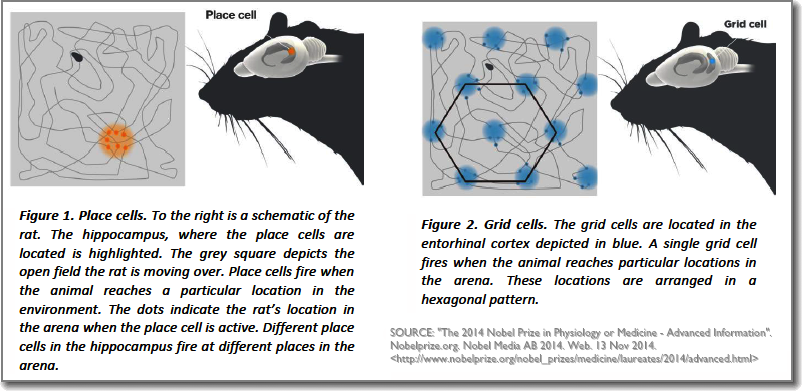|
April 05, 2025 |
PSY 340 Brain and Behavior Class 34: The Hippocampus and Striatum (Outline) |
|
|
April 05, 2025 |
PSY 340 Brain and Behavior Class 34: The Hippocampus and Striatum (Outline) |
|
The Hippocampus and Medial Temporal Lobe/System
Amnesia = memory loss
![[Hippocampus]](../graphics/hippocampus.jpg)
Memory Loss: Patient "H.M." & Damage to the Hippocampus
In 1953 Patient "H.M." had an operation at the hands of Hartfort, CT neurosurgeon, William Beecher Scoville. The surgery removed all of the hippocampus on both sides of his brain as well as nearby tissue (entorhinal, perirhinal, & parahippocampal cortices and the amygdala). This procedure was done to try to eliminate or control the many epileptic seizures that H.M. had been having since his adolescence. He was 27-years-old at the time of his operation.
Soon after the operation, it was clear that, while his seizures were greatly reduced, there were major problems with his memory. In 1955, Canadian neuropsychologist, Dr. Brenda Milner, began to evaluate H.M. and for many years, he was the subject of extensive research testing. Currently (April 2025), Dr.Milner is 106 years old!
H.M., whose real name we now know was Henry Gustav Molaison, died in Windsor Locks, CT on December 2, 2008.
What kind of brain functioning did H.M. show in the research testing and evaluations?
- No effect on intellect & language functions. I.Q. slightly higher in the years immediately after operation.
- Personality was relatively the same except for "emotional placidity" (= no complaints; no requests even for food)
- Good short-term memory, i.e., for new items up to about 5-10 minutes after the experience.
- Massive anterograde amnesia (loss of memories of new events since brain damage)
- Moderate retrograde amnesia (loss of memories of events before brain damage)
- Little learning of new declarative memories (i.e., facts and events) after 1955. There was some small amount of new learning as seen in his responses to verbal prompts:
- Prompt: "Elvis" • HM's response: "Presley"
- Prompt: "Fidel" • HM's response: "Castro"
- Prompt: "Martin Luther" • HM's response: "King"
- Severe impairment in episodic (personal) memories from before the operation
- Intact procedural memory, i.e., learning how to do something new.
Explicit memory: recall of information which one knows is in memory
Implicit memory: influence of recent experience on behavior even though one doesn't recognize memory is being used.
- H.M. showed poor new explicit memory, but nearly normal implicit memory.
What does the Hippocampus do?
Theories of Hippocampal Functioning => Medial Temporal Lobe/System
Dr. Eleanor Maguire
Recall that much more than just the hippocampus was removed on both sides of H.M.'s brain. All of these tissues as well as the hippocampus are now generally referred to as the Medial Temporal Lobe and the functions listed below as the work of the Medial Temporal System (see above left).
1. Declarative Explicit Memory
2. Spatial Memory
- London taxi cab drivers have "the Knowledge" -- they have memorized over 25,000 streets and landmarks within a 6-mile radius of Charing Cross as well as 320 routes that criss-cross the city (see image above, middle)
- It takes 3 to 4 years of study for most London taxi drivers to learn all of these spatial and location materials.
- Candidate taxi drivers take 7 exams in order to qualify for their license to drive a London taxi
- The ability of these drivers to know such a vast amount of spatial knowledge was originally studied by the late cognitive neuroscientist, Dr. Eleanor Maguire, (who died Jan 4, 2025 of cancer at age 54; see photo above on right) and first reported in 2000. Her studies and those of others show
- High levels of activation via PET scans for spatial related questions (e.g., What is the shortest route from the Tate Museum to Buckingham Palace?).
- Further, drivers have larger posterior hippocampi (plural of hippocampus) than normal.
- Humans with damage to the hippocampus do poorly on tests of spatial memory
- Bird species with good spatial memory
- Human "grid & place cell" navigation system: Nobel Prize 2014

- Place cells (hippocampus): mental map of place; spatial memory
- Grid cells (entorhinal cortext): map of place; orientation of head; distance between self & object
- "Internal Continuous GPS System"? Together the place & grid cells are scanning the environment from left to right continuously
3. Context: Configural Learning & Binding: a major role for the hippocampus in binding together all the elements of declarative memory, complex spatial memories, and single-event configurational memories
.
The Striatum: Implicit or Habit Learning (Where Skills and Habits Meet)
Basal Ganglia = striatum (i.e., putamen and caudate nucleus) plus the globus pallidus, substantia nigra, and subthalamic nuclei.
The striatum appears to be mostly involved in what can be termed "reinforcement-level learning" - that is,
- Gradual learning over multiple trials
- Learning habits and skills
- Learning requires prompt feedback (= reward or punishment is clear)
- Learning is implicit, that is, what is learned is not put into words, but into actions
- If the striatum is damaged, the ability to learn new skills or habits is impaired and previously learned skills/habits are often impaired as well